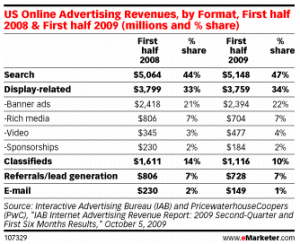 The CEO of the Associated Press is stirring up trouble in China. Tom Curley (right) took the opportunity of an address to the World Media Summit in Beijing to outline plans for an AP-led initiative to retake control of intellectual property produced by the organization and its members.
The CEO of the Associated Press is stirring up trouble in China. Tom Curley (right) took the opportunity of an address to the World Media Summit in Beijing to outline plans for an AP-led initiative to retake control of intellectual property produced by the organization and its members.
The three-part initiative includes the News Registry, which is a rights management and tracking system that includes some kind of digital licensing protocols. He also said the AP will create a NewsMap, which is a master index of original content submitted to the registry, and NewsGuide, which is “an aggregated body of unique news content,” that sounds a little bit like Google News only a lot harder to use. All this is happening under the banner of “Protect, Point and Pay,” the objective apparently been to make it really difficult for aggregators to access AP content without paying for it. Of course, history shown that, when faced with roadblocks like this, aggregators simply go elsewhere. No timeframe for the new initiatives was announced.
Jeff Jarvis is having none of it. The media iconoclast says he can’t help pointing out the irony of Curley’s choosing to unveil the AP’s plans in a land where government exercises tight control over what citizens may know. The whole idea indicates that the AP doesn’t understand the dynamics of the link economy and word-of-mouth transmission. Curley and his fellow control freaks, “are the ones killing newspapers, not the Internet,” Jarvis says.
Condé Nast ’09 Revenue Decline May Hit $1 Billion
If anyone doubts how hard this economy has hit the luxury sector, they have only to look at the dismal performance of Condé Nast. Newsweek reports that the upscale magazine publisher – one of the nation nation’s three biggest — may see its ad revenue drop by $1 billion in 2009. In light of that disaster, it’s not surprising that Condé Nast last week decided to close venerable publications like Gourmet and Modern Bride. The company still owns Architectural Digest, Vanity Fair, The New Yorker, GQ, Vogue, and Wired.
But for how long? Newsweek estimates that ad revenues at Architectural Digest are off by almost half and that Wired and Vanity Fairare off 35% and 27%, respectively. For the newspaper industry, there’s bad news, too. Condé Nast owns newspapers in more than 20 cities through its Advance Publications subsidiary. Cost-cutting could force cutbacks at those titles as well.
Glimmers of Good News
 Newspaper stocks are finally coming back from the dead, but can they hold their gains? MediaPost points to encouraging news. Since April, Gannett stock has more than tripled from $3.81 to $12.50, McClatchy has quintupled to $2.56, and Media General has jumped 250% from $2.54 to $8.86. It could be that the current valuations better reflect reality, Erik Sass suggests. Newspaper stocks became such a hot potato during the revenue implosions of the last two years that investors may have forgotten that the companies still have valuable audiences and profitable businesses.
Newspaper stocks are finally coming back from the dead, but can they hold their gains? MediaPost points to encouraging news. Since April, Gannett stock has more than tripled from $3.81 to $12.50, McClatchy has quintupled to $2.56, and Media General has jumped 250% from $2.54 to $8.86. It could be that the current valuations better reflect reality, Erik Sass suggests. Newspaper stocks became such a hot potato during the revenue implosions of the last two years that investors may have forgotten that the companies still have valuable audiences and profitable businesses.
Another researcher says the online ad market is bottoming out. eMarketer analyst David Hallerman says ad declines in the second half of 2009 will be less than the first half’s 5.3% drop. These days, that’s considered good news. See the eMarketer chart above. It looks like the big gainer will be search while classified advertising will lose ground.
Miscellany
For beleaguered news industry veteran who happen to speak Portuguese, the new mantra may be “goes south, young reporter.” The people of Brazil are reading newspapers in bigger numbers than ever, reports The Guardian. Total circulation of Brazilian newspapers rose 12% in 2007, or nearly five times the global average. It was up another 5% last year. The cause, apparently, is rapid growth in the middle class, which is seeing disposable income increase and creating both advertiser and reader demand. Newspaper revenues have risen every year since 2001. Rio de Janeiro’s historic Olympic Games win will only add life to the party.
Ink-stained wretches who enjoy pointing out the failings of the blogosphere should read Paul Carr’s rant about an apparently flagrant miscarriage of journalistic justice by ZDNet. The story, which was the work of a ZDNet blogger named Richard Koman, alleged that Yahoo had passed the names and e-mail addresses of hundreds of thousands of bloggers to Iranian authorities during the country’s controversial election. It turns out Koman‘s unnamed source for the story was an Iranian blogger with a decidedly vested interest in spreading misinformation. ZDNet has since retracted and apologized for the misstep. Carr isn’t letting the publisher get off that easily, however. He lectures blog aggregators in general — and ZDNet in this particular — for shoddy journalism for not even passing the blog entry by a second set of eyes before posting it. Quoting Winston Churchill: “A lie gets halfway around the world before the truth has a chance to get its pants on.”
USA Today has defied the industry circulation trends with minimal losses for the last two years, but that’s all about to come to an end. The newspaper is expecting circulation to drop 17%, the largest decline in its 27-year history. That translates into a loss of nearly 400,000 daily copies. The losses are apparently due to USA Today‘s reliance on hotel distribution. Cutbacks in business travel, combined with Marriott’s decision to discontinue automatic deliveries to its guests, created a potent double whammy.
Chicago has a new newspaper magnate, and he says he’s not going to repeat the mistakes of the last one. James Tyree , 51, chairman of Mesirow Financial, can’t help being compared to Sam Zell, the real estate magnate who bought Tribune Co. in 2007 and presided over its rapid descent into bankruptcy. Tyree (right) says Sun-Times Media Group is different. For one thing, there’s no debt. For another, Tyree understands the Internet. He reads six papers daily, all of them online. He has also made no bones about the challenges facing the company and has wrung significant concessions from the unions as a precursor to acquiring the Chicago Sun-Times and 58 suburban titles. If all goes as planned, he will take over control of the company in late October, much to the relief of employees and the Internal Revenue Service, which is owed more than $600 million by former owners.
, 51, chairman of Mesirow Financial, can’t help being compared to Sam Zell, the real estate magnate who bought Tribune Co. in 2007 and presided over its rapid descent into bankruptcy. Tyree (right) says Sun-Times Media Group is different. For one thing, there’s no debt. For another, Tyree understands the Internet. He reads six papers daily, all of them online. He has also made no bones about the challenges facing the company and has wrung significant concessions from the unions as a precursor to acquiring the Chicago Sun-Times and 58 suburban titles. If all goes as planned, he will take over control of the company in late October, much to the relief of employees and the Internal Revenue Service, which is owed more than $600 million by former owners.
 The Russian owner of the London Evening Standard has decided to stop playing pricing games and simply make the 182-year-old newspaper free. Alexander Lebedev (left) says the move will more than double distribution from 250,000 daily copies to 600,000. The billionaire banking magnate, who took over the paper earlier this year, says the loss of circulation revenue can be more than made up by advertising gains. However, skeptics say that’s a long shot in a market that has recently seen the loss of one free title (TheLondonPaper) and that shows no sign of an advertising upturn.
The Russian owner of the London Evening Standard has decided to stop playing pricing games and simply make the 182-year-old newspaper free. Alexander Lebedev (left) says the move will more than double distribution from 250,000 daily copies to 600,000. The billionaire banking magnate, who took over the paper earlier this year, says the loss of circulation revenue can be more than made up by advertising gains. However, skeptics say that’s a long shot in a market that has recently seen the loss of one free title (TheLondonPaper) and that shows no sign of an advertising upturn.
Canwest Global Communications will be run by a group of creditors as it attempts to dig out from more than $4 billion in debt. Canada’s largest publisher was granted bankruptcy protection late last week. The company owns a variety of broadcasting and print businesses including Global TV and the National Post. Its acquisition of the latter is now widely seen as the source of its current difficulties because it loaded down the company with debt.
The Claremont (N.H.) Eagle has been resuscitated and removed from our R.I.P. list after a new owner rehired about 20 staff members and relaunched the 8,000-circulation newspaper on a somewhat-less-than-daily frequency.
And Finally…
 It often takes an insider who understands the existing cultural norms to effect real change. That’s why Dan Gillmor continues to be such an effective voice for new-media reform. The former San Jose Mercury News columnist posts a list of 22 ideas for “changing the way news is produced.” They include simplifying language to speak in facts, not euphemisms, linking aggressively to competitors’ content, doing away with the use of unnamed sources and illuminating the motives of the people behind reported stories. While some of Gillmor’s proscriptions may seem condescending, his manifesto reflects the way information is communicated in the emerging bottom-up world. More than 100 commenters contribute their own addenda.
It often takes an insider who understands the existing cultural norms to effect real change. That’s why Dan Gillmor continues to be such an effective voice for new-media reform. The former San Jose Mercury News columnist posts a list of 22 ideas for “changing the way news is produced.” They include simplifying language to speak in facts, not euphemisms, linking aggressively to competitors’ content, doing away with the use of unnamed sources and illuminating the motives of the people behind reported stories. While some of Gillmor’s proscriptions may seem condescending, his manifesto reflects the way information is communicated in the emerging bottom-up world. More than 100 commenters contribute their own addenda.
Comments
This entry was posted on Tuesday, October 13th, 2009 at 4:43 am and is filed under Facebook, Fake News, Google, Hyper-local, Paywalls. You can follow any responses to this entry through the RSS 2.0 feed. Both comments and pings are currently closed.



The world ALWAYS was N:M and, apart from a 150 year flirtation with 1:N, its becoming N:M again with the internet.
The problems in ALL ad supported media is that the client base is going away.
The client base is using the internet for far more than the 1:N media can ever hope to achieve.
The ones who can deal with the fact have a workable business model.
The ones who rely on advertising are doomed to ruin themselves.
I am sorry but Google has no record of the phrases N:M being used in terms of advertising.
Please enlighten us plebes as to what it means.
I believe it refers to few:many